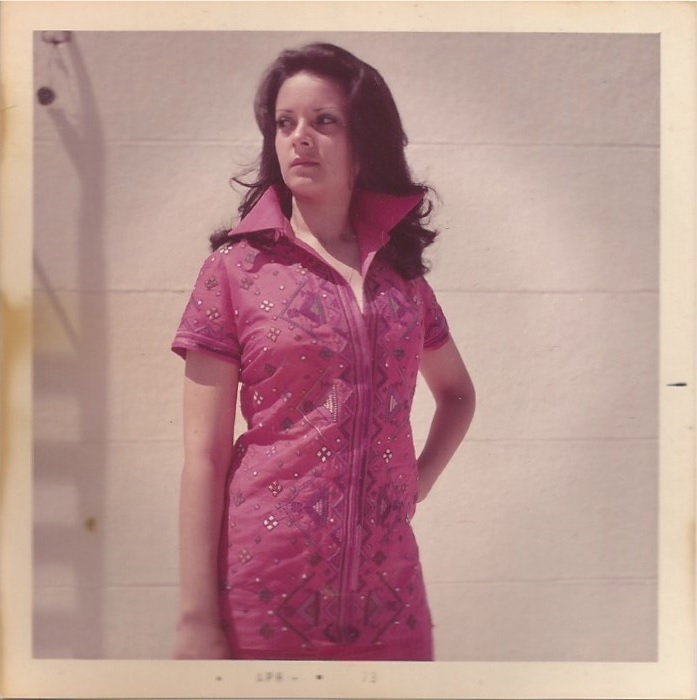
During the First Intifada, when Israeli soldiers confiscated the flags of Palestinian women protesting in the streets, the women responded by embroidering the Palestinian flag and silhouettes of the country in endless repetition along the chests, sleeves, and back hems of their thobes (traditional Palestinian dresses). Samples of these politically charged “Intifada Dresses” are on display through July 30 in Beirut, Lebanon as part of an ambitious survey featuring more than 60 embroidered items, as well as photographs, paintings, and graphic arts representing Palestinian textiles throughout history.
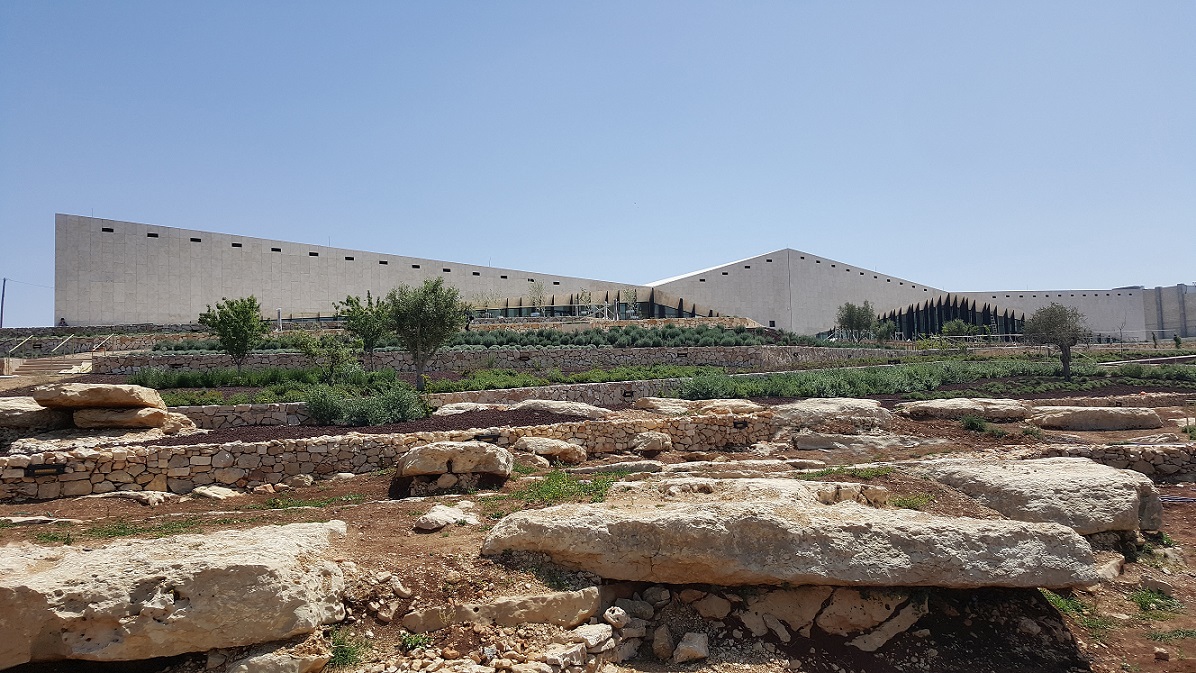
Though it’s short on water, electricity, and jobs, Beirut continues to manifest a vibrant arts scene that defies the impotence of a local government that bungled the city’s garbage collection and a national government, which has failed to elect a president for more than two years. A museum opened in a luxury mall last year, a co-working space doubles as an art gallery, and a building used by snipers during the Lebanese Civil War is being converted into a cultural institution – bullet marks left intact, supposedly. Interviewed via Skype, British-born independent curator Rachel Dedman describes the palpable energy and “jam-packedness” of an environment where tension over public space has arisen amid the proliferation of high-end skyscrapers and private waterfront developments, a growing commercial art business, long-standing Palestinian refugee camps, and an influx of Syrian refugees. Her show, “At the Seams: A Political History of Palestinian Embroidery,” was one of the inaugural exhibitions launching Dar el-Nimer for Arts and Culture, a venue established in a renovated 1930s building, on May 25th.
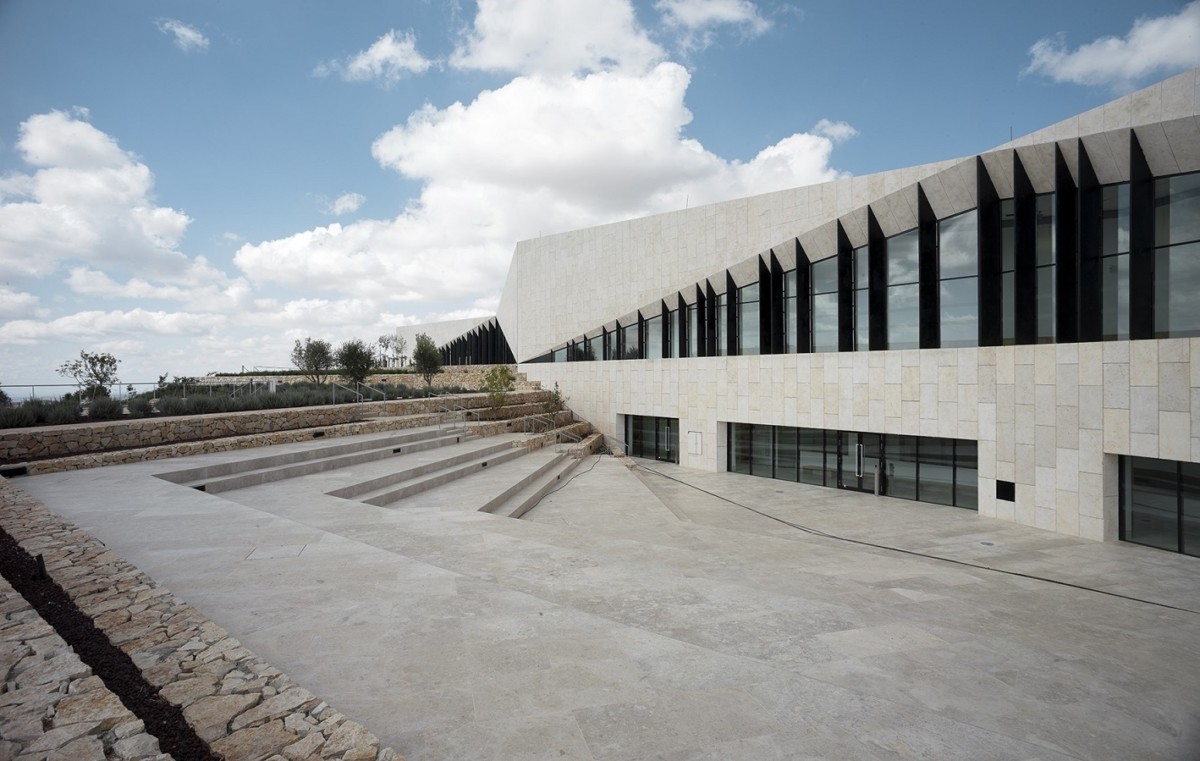
“At the Seams” features traditional textiles and archival photos from the early 20th century, but it breaks ground by showcasing Dedman’s original research to extend the survey of Palestinian embroidery beyond 1948, when the State of Israel was declared. Developed in conjunction with the principals planning the new Palestinian Museum in Birzeit, the West Bank, the show was conceived as the museum’s first “satellite” exhibition. In the midst of the entrenched, explosive Israeli-Palestinian conflict, these cultural enterprises represent a bold effort to more effectively direct the narratives about Palestinian history and society, and affirm Palestinian statehood.
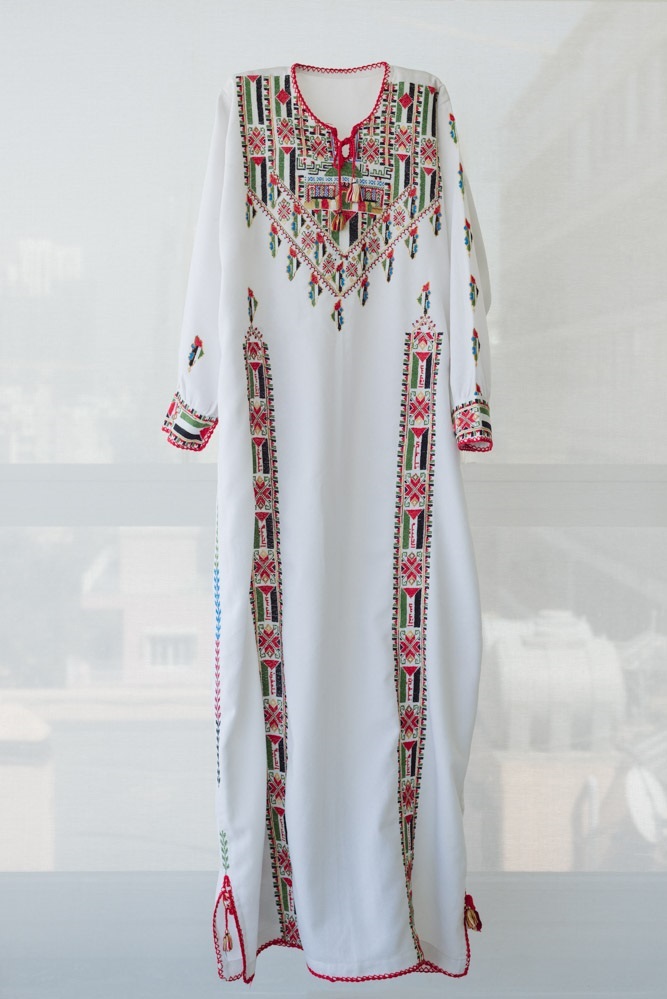
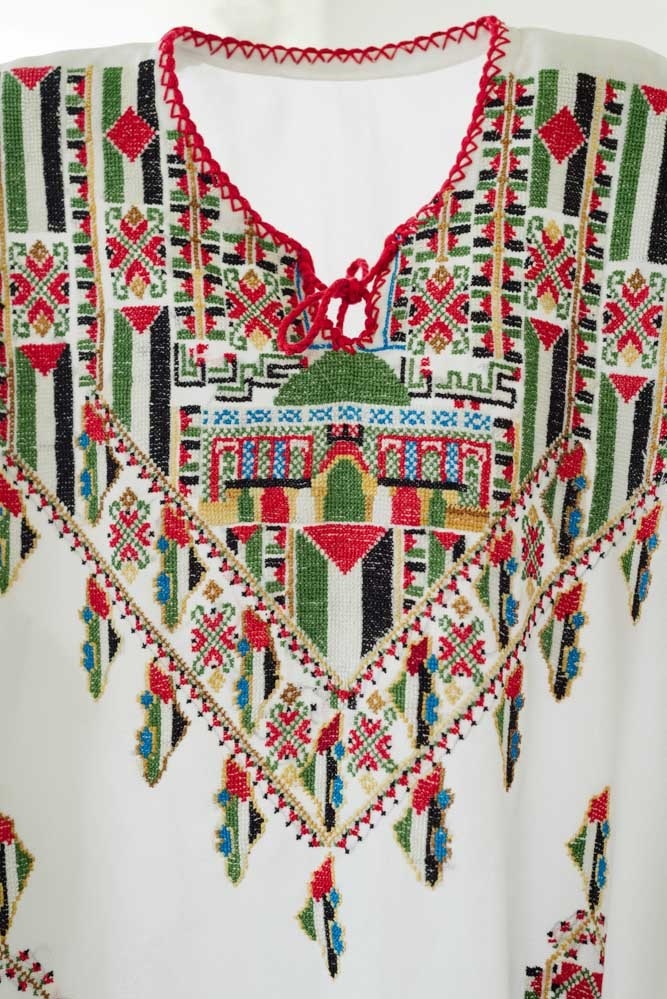
Palestinians revere this embroidery because it is a concrete expression of the place where they came from. Each piece is very specific to the particular village, the particular place where these people and their ancestors were born.
In 2013, when Dedman first discussed the collaboration with then-Palestinian Museum director Jack Persekian and Omar Al-Qattan, head of the Palestinian Museum Task force at Taawon-Welfare Association, the primary institution backing the museum, she says they developed an approach that encouraged risk-taking and embraced the political questions and problems inherent in assembling materials representing Palestinians’ experiences and personal stories, “because there are loads of them.” She rejected the traditional romantic, domestic frames of evaluating women’s work to consider the pieces as reflections of the changing political, socio-economic circumstances of Palestinians. Palestinian embroidery is often regarded in a vacuum, but Dedman’s research examined how it is now produced and distributed throughout the global economy, and how patterns are regularly grafted onto international fashion designs. These practices highlight what she calls the “macro question” of the exhibition: how Palestine is being “reflected, extended, and materialized in the world today.”
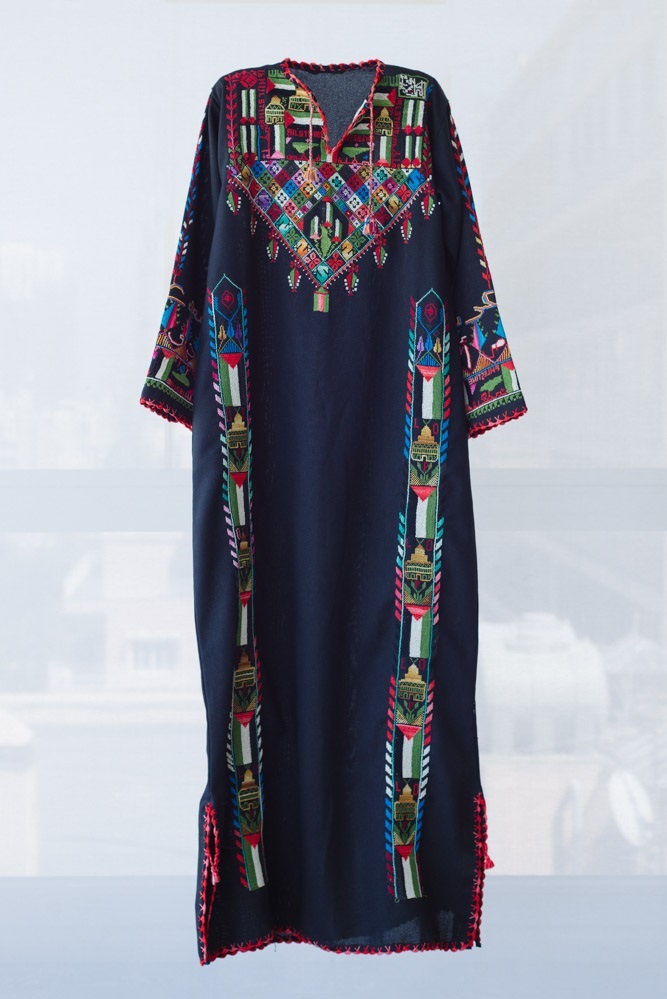
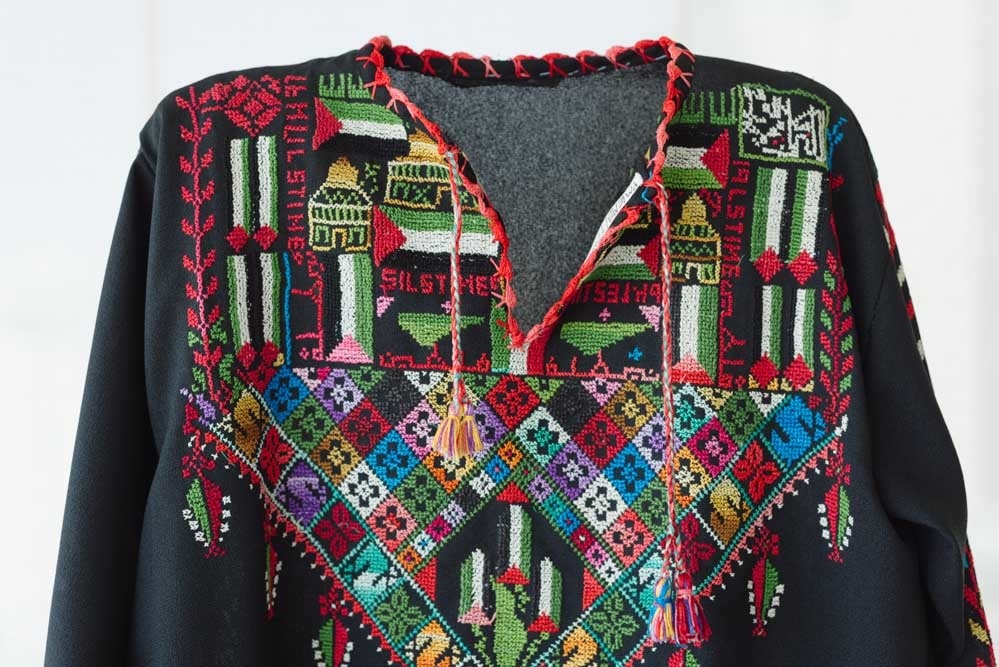
Most of the historical garments presented in the show were sourced from collectors committed to documenting the artistry of the past. Others were recreated from archival photos. Distinct by region, older embroidery patterns indicate the provenance of each work. Dagmar Painter, curator for Gallery Al-Quds at the Washington, D.C.-based Jerusalem Fund, underscores the greater legacy these textiles represent. Reached by phone, she explains, “Palestinians revere this embroidery because it is a concrete expression of the place where they came from. Each piece is very specific to the particular village, the particular place where these people and their ancestors were born.” In some cases, Painter points out, the villages have since been destroyed and can no longer be found on maps. Additional examples of the works are revealed in archival photos on loan from the Palestinian Museum’s Palestinian Audio-Visual Archive project.
In a phone interview, Hanan Munayyer, a Palestinian American who immigrated to the United States in 1970, shares another perspective on why these works resonate so powerfully among Palestinians in the diaspora. “Embroidery since 1948 has been one of the prime identity themes that Palestinians hold on to,” she notes. “First of all, because textiles are very easy to move from country to country – it’s not like furniture – so everyone has some form of textile in exile or immigration. It’s a form of identity badge: a beautiful and successful example of their existence, of their culture, that had nothing to do with the misery of war and suffering.” Together with her husband, Munayyer founded the Palestinian Heritage Foundation in Washington, D.C. to exhibit their collection of textiles and build awareness of Palestinian culture.

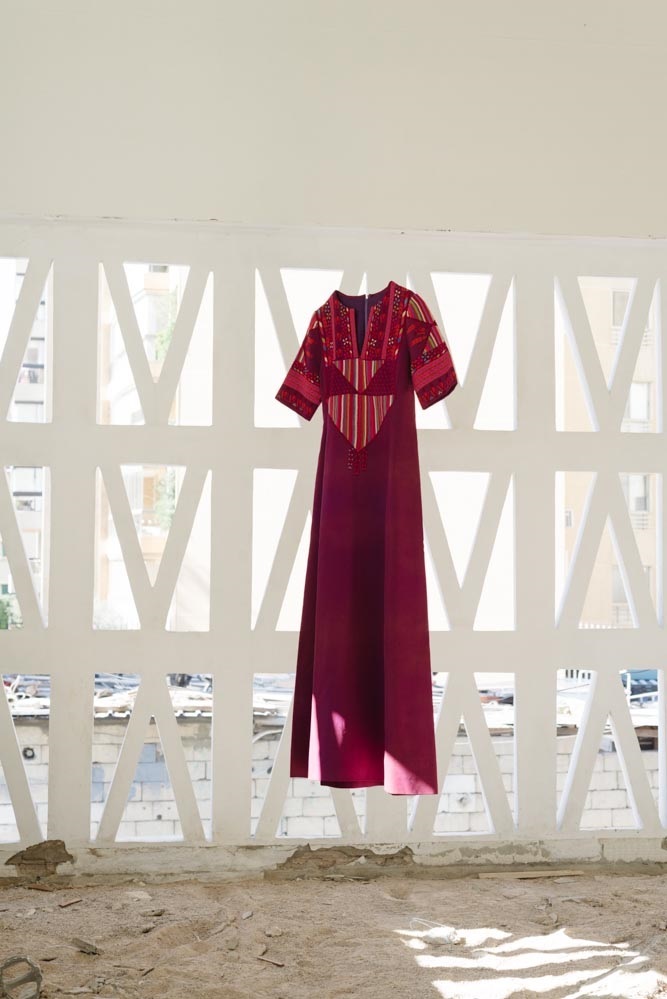
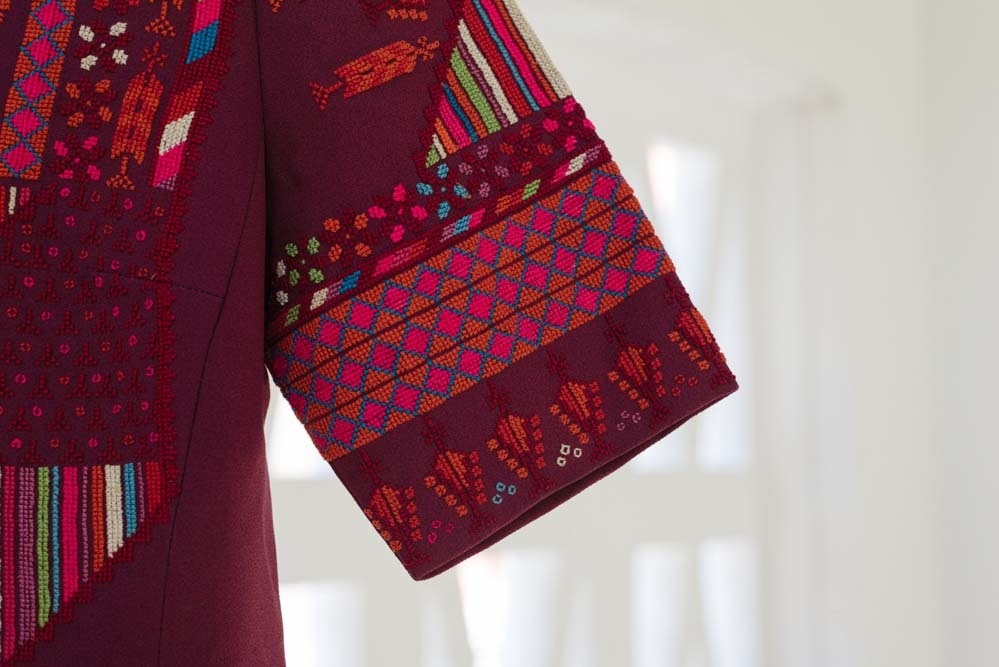
Graphic arts from the 1970s and beyond… demonstrate how images of Palestinian embroidery were incorporated as shorthand for themes of resistance and strength…
Through a collaboration with the Beirut-based Association for the Development of Palestinian Camps, a non-profit more commonly known as Inaash, works produced in Palestinian refugee camps in Lebanon are also featured in “At the Seams.” Founded in the late 1960s, Inaash established embroidery workshops as an urgent measure to protect and extend the cultural heritage of the form and create a livelihood for families in the camps. (Currently, almost 450,000 of the Palestinian refugees registered with the United Nations Relief and Works Agency for Palestine Refugees remain in Lebanon.) All Inaash selections included in the show were designed by Malak al-Husseini Abdulrahim, whose work is profiled in a new documentary film by Maeve Brennan commissioned for the show. Polaroid photos from the Inaash collection reveal 1970’s-era fashions that have served as inspirations.
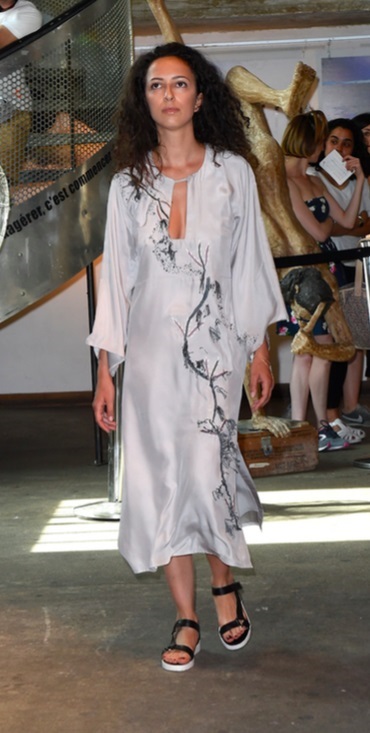
Through her research, Dedman identified materials produced after 1948 that reference a wide range of political conflicts and cultural exchanges. The Intifada Dresses reveal elements of traditional embroidery patterns dominated by repetition of the Palestinian flag, silhouettes of the country, doves, rifles, and the al-Aqsa Mosque, among other motifs. Characterized by Dedman as “making women’s bodies powerful sites of political resistance and explicit nationalism,” these garments were also produced in solidarity by Palestinians in the diaspora in Jordan, Lebanon, and Syria. Graphic arts from the 1970s and beyond, sourced from the Palestinian Poster Project Archives, demonstrate how images of Palestinian embroidery were incorporated as shorthand for themes of resistance and strength – both within the Middle East and in other areas, including Cuba. Exploring contemporary, global distribution, Dedman has featured selections from the social enterprises Taita Leila (“Grandma Leila”), an online platform that sells clothes embroidered by women in the West Bank, and Ibra wa Khayt (“Needle and Thread”), a Ramallah-based business that upcycles pieces of old thobes into new skirts and pants. Contemporary Palestinian fashion designers highlighted include Sasha Nassar and Natalie Tahhan.
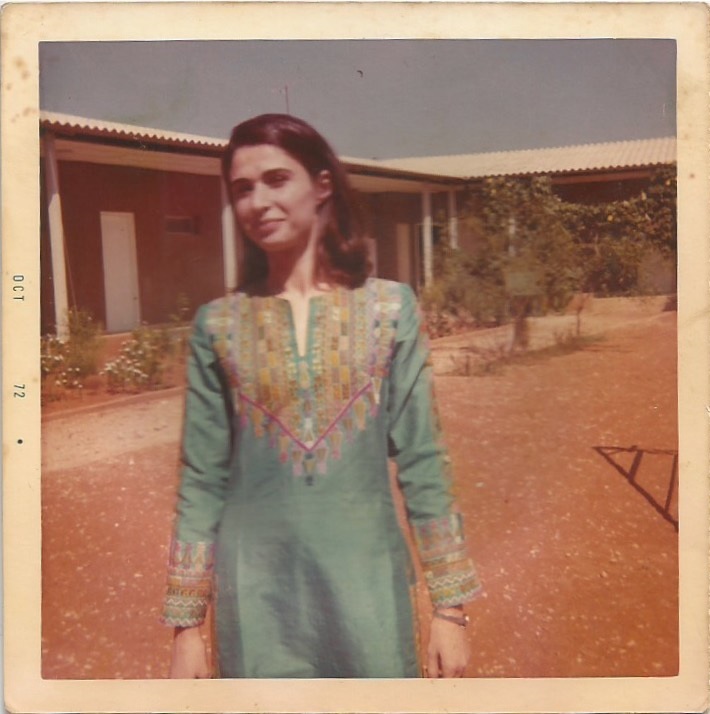

An integral part of the Palestinian Museum’s mission is to serve as a “museum without borders.” By planning satellite exhibitions like “At the Seams” in cities throughout the Middle East and emphasizing digital platforms and online collections, it seeks to engage and reflect the Palestinian diaspora and increase its global audience. A museum spokesperson explained via email last fall, “We are determinedly pushing ourselves to think across borders and barriers to resist succumbing to the restricted geography and mobility and the cordoning of territories that we’ve seen as a result of the Israeli occupation and our internal divisions.”

Built in the hills seven miles north of Ramallah, the museum building is in Area A of the West Bank, a region fully controlled by the Palestinian Authority. But with the violent political conflict with Israel only inflamed by recent attacks on Israeli citizens by Palestinians and Israel’s decision in early July to allow expansion of a West Bank settlement, this major cultural institution comes into being at a time when the peace process – and the project of Palestinian nation-building – are thwarted. Painter emphasizes the political implications of the museum’s plans. Addressing the strategy of facilitating satellite exhibitions, she asserts, “I think that it’s not only meant to reach out to the diaspora. I think it’s meant to reach out to the rest of the world, [to say] ‘Look, there is a part of Palestine that exists. Here’s the proof.’ It’s almost like a cultural embassy, one more way to make concrete the truth of their existence.” She sees the museum site in Birzeit as extremely important, even if travel to the West Bank is ultimately limited. “One of the biggest problems with the diaspora is that there are no facts on the ground. There are so few places, so few buildings, so few elements of Palestine as a physical entity. What creates the reality for there being a nation?”

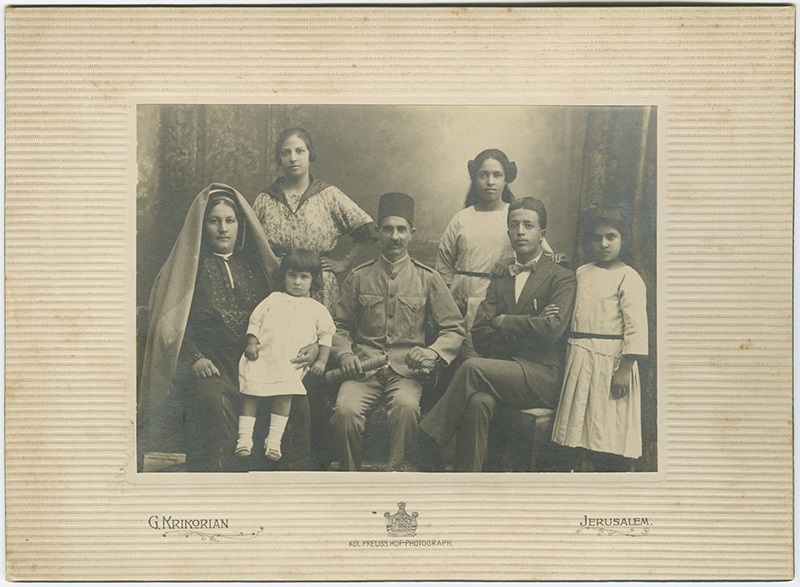
After years of construction and program development, the Palestinian Museum ultimately opened its doors to the public on May 18th in the wake of internal turmoil. The original director, Jack Persekian, abruptly departed in December 2015, and since then, long-planned exhibitions and projects have been reconceived or paused. The museum nonetheless launched without any exhibitions on display, hosting inaugural festivities celebrating the completion of the grand building designed by Dublin-based architecture firm Heneghan Peng and the terraced gardens. The event also introduced the public to the new Director General of the museum, Dr. Mahmoud Hawari, who was most recently a visiting academic at the British Museum.
More than 130 miles away in Beirut, the museum’s first satellite initiative is successfully leveraging rigorous scholarship and an expansive view to challenge conventional perspectives and spark an innovative exploration of Palestinian history and culture.
“At the Seams: A Political History of Palestinian Embroidery” runs May 25th to July 30th.
